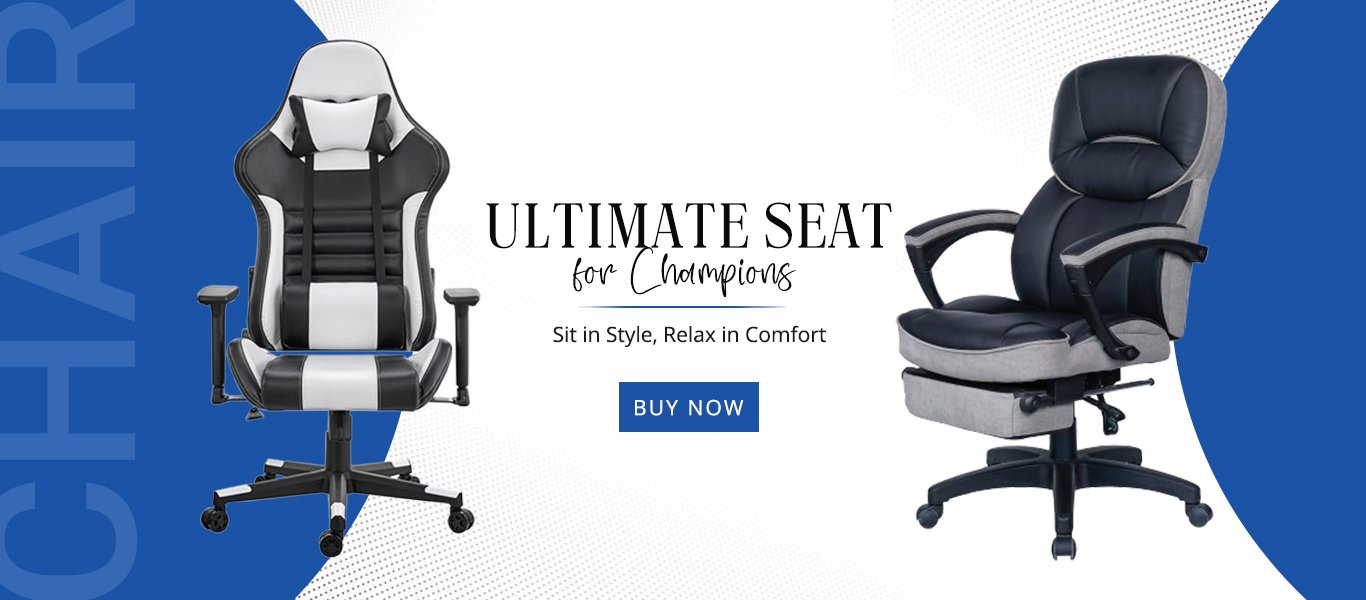How to Set Up Your Gaming Chair for Perfect Posture
How to Set Up Your Gaming Chair for Perfect Posture
Blog Article
Maintaining a good posture while gaming is essential for preventing discomfort, reducing strain, and improving overall performance. A well-adjusted gaming chair provides the necessary support for long gaming sessions while protecting your spine and muscles from unnecessary stress. This guide will walk you through the correct setup to achieve perfect posture with your gaming chair.
Understanding the Importance of Good Posture
Good posture isn’t just about comfort; it directly impacts your health and gaming performance. Poor posture can lead to:
- Neck and back pain from slouching
- Poor blood circulation due to prolonged sitting
- Increased fatigue caused by improper support
- Lower gaming efficiency due to discomfort
A properly set up chair ensures spinal alignment, reduced muscle strain, and enhanced focus, making your gaming experience more enjoyable and pain-free.
Adjusting Your Gaming Chair for Optimal Comfort
1. Set the Correct Seat Height
The first step in setting up your chair is adjusting the seat height to match your desk setup. Follow these steps:
- Sit with your feet flat on the ground.
- Your knees should be at a 90-degree angle with your thighs parallel to the floor.
- Ensure that your hips and knees are aligned for better stability.
- If your chair is too high, use a footrest to maintain proper positioning.
2. Position the Backrest for Lumbar Support
Your lower back (lumbar region) requires proper support to maintain the spine’s natural curve. Here’s how to adjust it:
- If your chair has a lumbar support pillow, position it at the curve of your lower back.
- The backrest should be slightly reclined (100-110 degrees) to avoid excessive spinal pressure.
- Keep your shoulders relaxed and aligned with the backrest.
3. Adjust the Armrests to Reduce Shoulder Strain
Armrests help alleviate strain on your shoulders and arms. The right setup prevents fatigue and enhances overall control while gaming. Follow these guidelines:
- Armrests should be level with your desk height to avoid hunching.
- Your elbows should be at a 90-degree angle while resting on the armrests.
- Keep your wrists straight while using the keyboard and mouse to prevent strain.
4. Ensure Your Screen is at Eye Level
An improperly placed screen can cause neck strain and eye fatigue. Adjust your setup accordingly:
- Your monitor should be positioned at eye level so you don’t need to tilt your head up or down.
- Maintain a distance of at least 20 inches (50 cm) between your eyes and the screen.
- If needed, use a monitor stand to elevate the screen.
5. Set the Right Seat Depth for Thigh Support
Proper seat depth prevents pressure on your legs and knees, ensuring comfort during long gaming hours:
- Sit back so that there is a 2-3 inch gap between the seat edge and your knees.
- If your chair allows seat depth adjustment, ensure your thighs are fully supported without pressing against the seat edge.
6. Use a Footrest if Necessary
For shorter individuals, a footrest can help maintain proper posture:
- Your feet should rest flat on the footrest.
- Avoid dangling legs as it can cause circulation issues.
7. Tilt and Recline for Comfort and Support
Reclining slightly can help distribute weight and reduce spinal pressure:
- Keep the backrest at 100-110 degrees for a balanced posture.
- Avoid excessive reclining as it may cause strain on your neck and lower back.
8. Keep Your Knees and Hips Aligned
Maintaining alignment between your knees and hips helps in reducing lower back pressure:
- Your knees should never be higher than your hips.
- Adjust the seat angle if necessary to maintain a balanced posture.
Common Mistakes to Avoid
Many gamers unknowingly develop habits that contribute to postural problems. Here are some mistakes to avoid:
- Slouching forward – This puts strain on your back and shoulders.
- Not using lumbar support – Leads to lower back pain over time.
- Improper screen positioning – Causes neck and eye strain.
- Keeping armrests too low or too high – Can cause shoulder pain.
- Sitting for too long without breaks – Leads to stiffness and reduced circulation.
Additional Tips for Maintaining Good Posture
Besides setting up your gaming chair correctly, consider these extra tips for improving posture and overall well-being:
- Take breaks every 30-45 minutes to stretch and move around.
- Perform simple neck and back stretches to prevent stiffness.
- Invest in a quality gaming chair for long-term health benefits.
- Maintain a healthy sitting posture even outside gaming sessions.
Finding the Right Gaming Chair for Your Needs
When choosing a high-quality gaming chair, factors such as adjustability, lumbar support, and material quality matter. If you are looking for Gaming Chairs Online in UK, you can explore a wide selection here. Similarly, if you are in Germany, check out Gaming Chairs Online in Germany for options suited to your needs.
Conclusion
Setting up your gaming chair for perfect posture is essential for a comfortable and healthy gaming experience. By following these adjustments and posture tips, you can avoid long-term health issues while improving your gaming efficiency. Remember, proper ergonomics enhance both comfort and performance, making your setup more effective for extended gaming hours.
Report this page